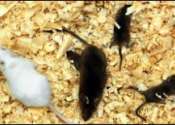Scientists uncover a new pathway that regulates information processing in the brain
Scientists at The Scripps Research Institute (TSRI) have identified a new pathway that appears to play a major role in information processing in the brain. Their research also offers insight into how imbalances in this pathway ...
Nov 9, 2012
4
0








